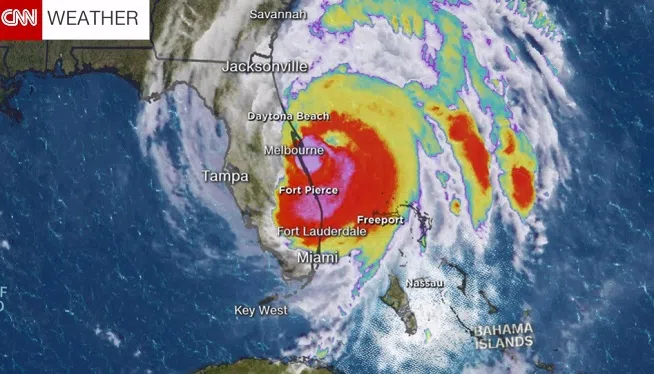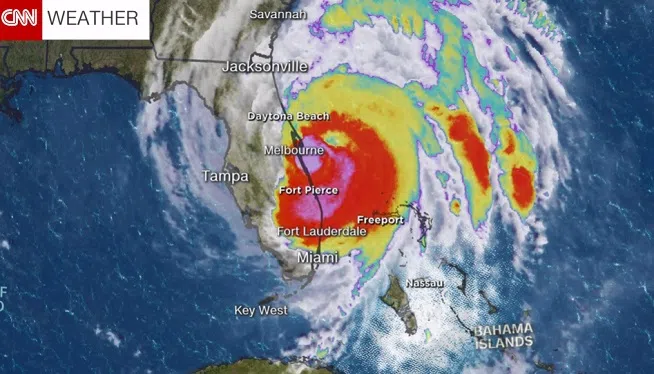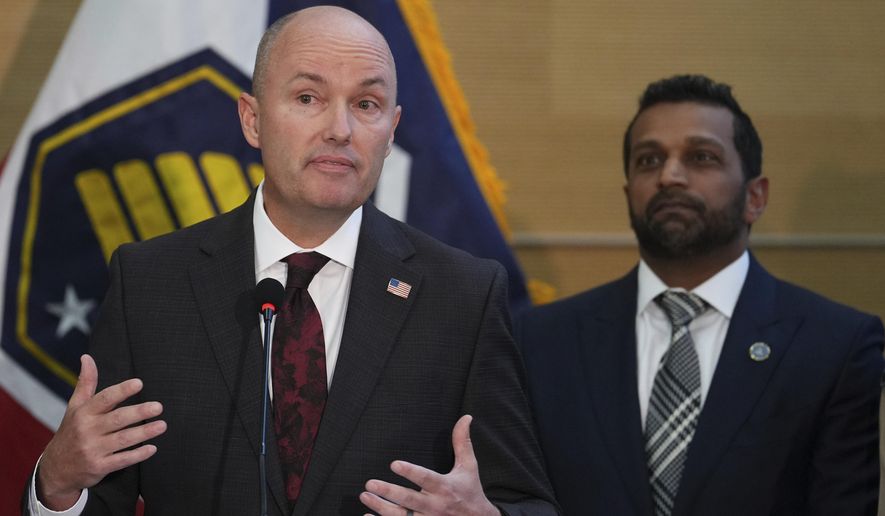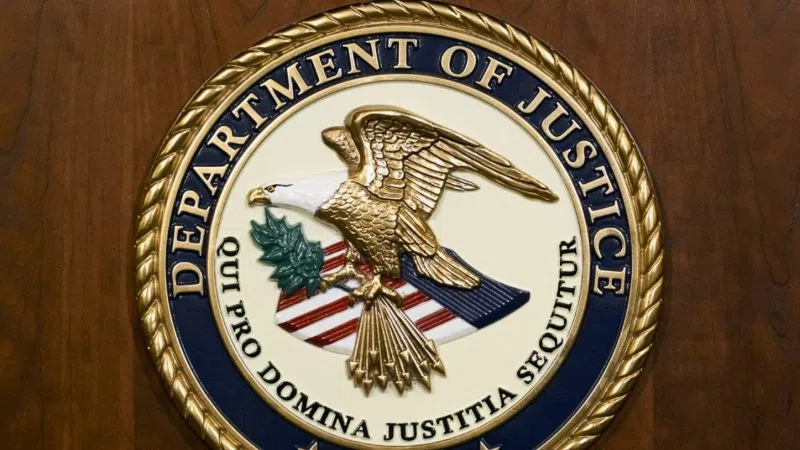MELBOURNE, FL — (CNN) The National Weather Service is not mincing words about powerful Hurricane Matthew.
The agency’s Melbourne, Florida office warned Thursday night that homes and buildings in central Florida “may be uninhabitable for weeks or months.”
The dire warning is similar to one sent just before Hurricane Katrina plowed into the Gulf Coast in 2005, CNN Senior Meteorologist Dave Hennen said.
The effects of the storm will be unlike any hurricane in decades, the weather service said.
The caution came as Matthew’s outer bands raked the Florida peninsula and the eye of the storm moved closer to the state’s east coast.
Weather experts watched for the slightest change in its unpredictable path, which they say could make an enormous difference to the hurricane’s impact on land.
“The exact path is so critical,” said CNN meteorologist Derek Van Dam. “Miles and kilometers really count, because if it wobbles westward by say 30 miles, it brings those strong winds onshore.”
“If it stays offshore, the bulk of the destructive winds will stay 15 to 30 miles offshore.”
The biggest questions remained: Will it make landfall? If so, where?
By Friday morning, Matthew weakened from a Category 4 to a Category 3, but the unpredictable hurricane spun perilously close to shore, bringing heavy rains, lashing beachfront communities with powerful winds and taking out power for more than 200,000 Florida residents.
Here’s what you need to know:
- Matthew is a Category 3 storm with winds of 120 mph, according to the latest National Hurricane Center advisory. As of 4 a.m. ET, Matthew was about 45 miles east of Melbourne, Florida.
- Forecasters predict storm surge is some areas could be as high as 11 feet and as many as 15 inches of rain could fall.
- Roughly 26 million people live in areas that are under a hurricane or tropical storm warning or tropical storm watch, and the hurricane will likely cause billions of dollars in damage, Hennen said. The National Weather Service warned that some places could be uninhabitable for “weeks or months.”
- The storm has killed at least 269 people in three Caribbean countries. The majority, 264 people, died in Haiti, said Civil Protection Service spokesman Joseph Edgard Celestin.
- Based on the latest projections, Matthew could make landfall in Florida as a Category 3 storm, or it could skirt the coast and head north before possibly heading back toward land.
Gov. Rick Scott, who spent the better part of the past three days warning residents to evacuate ahead of the Category 4 hurricane, told them that the storm is a “monster.”
“You still have time to leave. Get out. There’s no reason to take a chance,” he said.
Many left coastal areas, but many stayed, anxious to see how their area would stand up to the storm.
[van id=”weather/2016/10/06/rick-scott-florida-hurricane-matthew-kill-people-bts-newday.cnn”]
Florida braces for direct hit
Scott told those on the state’s Atlantic coast that the question is not whether they will lose power, but for how long. More than 200,000 customers are without power as Hurricane Matthew neared the coast, according to Florida Power & Light.
A direct hit by Matthew, he said, could lead to “massive destruction” on a level unseen since Hurricane Andrew in 1992. Voluntary and mandatory evacuations in the state stretch from Miami to the Florida-Georgia border.
At least two counties are under curfew until 7 a.m. Saturday, officials announced. Orange and Volusia Counties on Thursday night instituted mandatory curfews. The curfews include Orlando and Daytona Beach.
Airline passengers were urged to call before leaving for the airport. Florida airports had canceled hundreds of flights, most of them in Miami, Fort Lauderdale and Orlando. Fort Lauderdale closed its airport, airlines suspended operations in Miami, and Orlando’s airport closed Thursday evening.
Palm Beach residents cleared many grocery store shelves ahead of the storm. Yet despite all the warnings, West Palm Beach Mayor Jeri Muoio said not everyone is listening, even with mandatory evacuation orders in place.
With the eye of Hurricane Matthew pushing north, Miami-Dade County will restart some services, including public transit, on Friday morning, Mayor Carlos A. Gimenez announced.
The mayor said evacuation shelters would close Friday.
Mandatory evacuations in South Carolina
Cars packed highways in South Carolina, where officials gave mandatory evacuation orders for several counties.
Close to half a million people were expected to have evacuated by Thursday, said Kim Stenson, director of South Carolina Emergency Management.
The South Carolina Department of Transportation changed the directions of eastbound traffic lanes to accommodate the exodus of people leaving coastal cities like Charleston.
As thousands fled inland, some people said they were staying put. Charleston residents boarded up businesses and prepared to hunker down.
Cheryl Quinn said she and her husband were fine a year ago when Charleston endured a brush with a big storm.
“It was kind of a party down here. I hate to say that,” she said, but she’s reserved a hotel room, just in case.
North Carolina playing it by ear
Gov. Pat McCrory declared a state of emergency for the state’s 100 counties. So far, though, no government official in the state has urged residents to evacuate.
“We’re just going to have to play it by ear and have our resources ready,” the governor has said.
Officials are concerned eastern North Carolina areas that were recently flooded will see more rain from Matthew.
Georgia governor: ‘Remain calm, be prepared’
Gov. Nathan Deal has declared a state of emergency in 30 counties near the coast and ordered evacuations for all counties east of Interstate 95.
Of special concern is Tybee Island, a low-lying island east of Savannah, which is also under mandatory evacuation orders. “Remain calm, be prepared and make informed, responsible decisions,” Deal said.
In Savannah, Mayor Eddie DeLoach warned those who stay that they’d be on their own.
CNN Atlanta affiliate WSB reported 20-mile long traffic backups on I-75 northbound, south of metro Atlanta, as people fled the storm.
The-CNN-Wire ™ & © 2016 Cable News Network, Inc., a Time Warner Company. All rights reserved. (PHOTO: CNN)

























